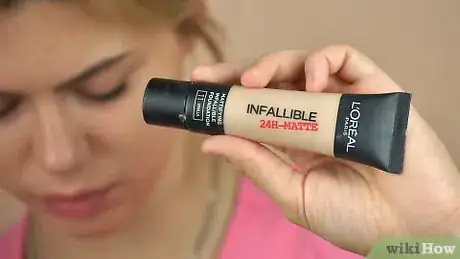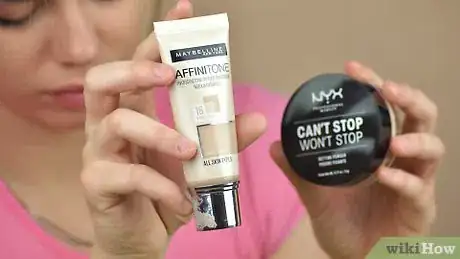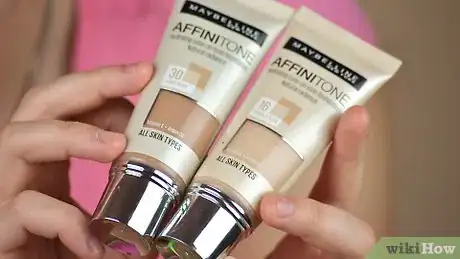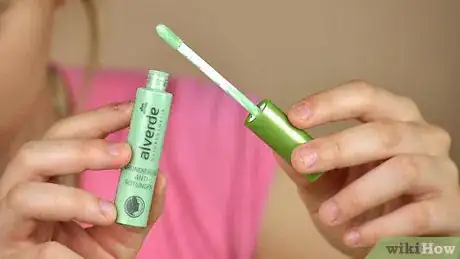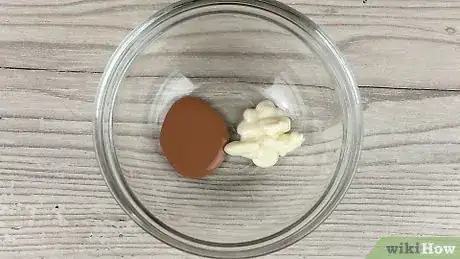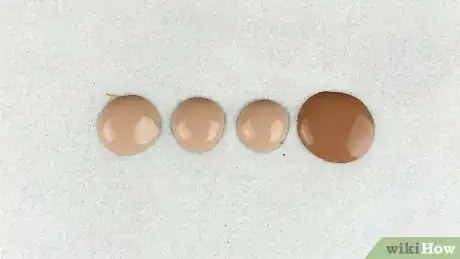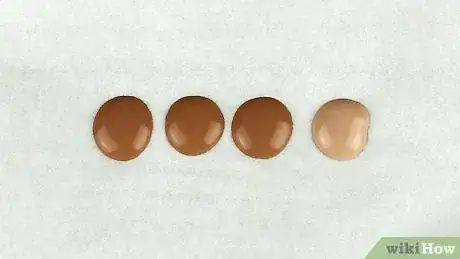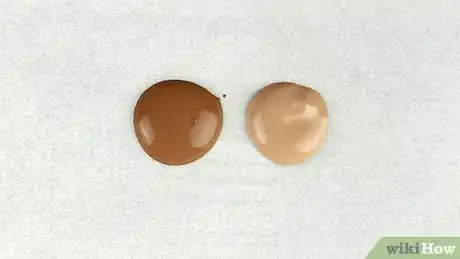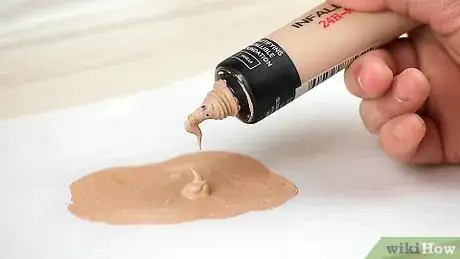This article was co-authored by wikiHow staff writer, Hannah Madden. Hannah Madden is a writer, editor, and artist currently living in Portland, Oregon. In 2018, she graduated from Portland State University with a B.S. in Environmental Studies. Hannah enjoys writing articles about conservation, sustainability, and eco-friendly products. When she isn’t writing, you can find Hannah working on hand embroidery projects and listening to music.
There are 10 references cited in this article, which can be found at the bottom of the page.
The wikiHow Video Team also followed the article's instructions and verified that they work.
This article has been viewed 27,420 times.
Learn more...
Foundation is the base of your entire face of makeup, which is why it’s so important to find the right shade for you. If you’re buying foundation online or at a drugstore, it can be hard to find an exact match for your skin tone, color, and undertones. You can try mixing a few shades of your foundation together to find the perfect match for your skin during every month of the year.
Steps
Choosing Compatible Formulas
-
1Determine your skin's undertones and select foundations that match. Find your undertones by looking at the veins in your wrist under natural light. If they are green, you have warm undertones. If they are blue or purple, you have cool undertones. If you can’t tell the difference or they look green and blue, you probably have neutral undertones.[1]
- If you have neutral undertones, you can pull off either warm or cool shades of foundation.
- You can mix warm and cool toned foundation together if you want a little bit of both.
-
2Go with foundations that have the same finish. Matte and dewy finishes don’t mix well together since one is more oily than the other. As you pick out your foundation, try to choose ones that have similar formulas to avoid uneven mixes.[2]
- Matte finishes are great if you have oily skin, since they will tamp down on shine.
- Dewy finishes are nice if you have dry or flaky skin, since they can bring some moisture back into your face.
Advertisement -
3Pick out foundations that both have the same coverage. Some foundations are great for a full-coverage glam look, while others give more of a subtle, even skin tone. You can choose between light, medium, and full-coverage foundation to find one that’s right for you. Make sure each foundation you buy is the same coverage to avoid splotchy-looking foundation.[3]
- If you aren’t a fan of full-coverage liquid foundation, you can choose a BB cream for a lighter feel.
-
4Buy a liquid or cream foundation instead of powder or stick. Although powder and stick foundations are great, they don’t mix together well. Stick to liquid or cream foundation if you want to mix yours together, and choose powder or stick foundation to add color onto your face afterwards if you need to.[4]
-
5Purchase a light foundation for the winter and a dark one for summer. Make sure they both have the same undertones as your skin, but make the lighter one 1 to 2 shades lighter than the darker one. Depending on how tan you get in the summer, you may need an even wider range of shades.[5]
Tip: If you aren’t sure which shade of foundation to buy, wait until each season (summer and winter) and then get color matched at a professional makeup counter.
-
6Correct redness or dark spots with green or orange pigments. Put 1 to 2 drops of green color correcting fluid into your foundation to neutralize any redness or blemishes you may have. Add 1 to 2 drops of orange color correcting fluid into your foundation to cover up any sun spots or dark areas.[6]
- You can find liquid color correctors at most beauty supply stores.
Blending Cream Foundation on Your Face
-
1Wash your face and apply moisturize your skin like you normally would. Use a gentle cleanser and warm water to rid your face of oils and dirt. Then, apply a thin layer of moisturizer all over and let it dry for about 15 minutes before you put on your foundation.[7]
- Starting with a clean base will give you more of an even coverage and make you less prone to breakouts.
-
2Apply the lighter foundation to your cheeks, nose, and chin with a makeup brush. Use your finger to gently place small dots of foundation on your forehead, cheeks, nose, and chin. Stick to the inside of your face for now when you use the lighter foundation.[8]
- Adding a lighter foundation to the inside of your face brightens it up.
-
3Blend the lighter foundation up and outwards with a blending sponge. Use a blending sponge or brush to pat the lighter foundation into your face. Move outwards toward your hairline and jawline in small, circular motions for the best coverage.[9]
- Don’t go all the way up to your hairline or jawline just yet, but take the foundation up as far as it will go.
-
4Dab the darker foundation around the outside of your face. Place small dots of the darker foundation near your hairline and jawline on top of any of the lighter foundation. If it’s the winter, put 2 to 3 dots of the dark foundation on either side of your face to start. If it’s the summer, go with 4 or 5 on each side of your face.[10]
- You can always add more dark foundation, but you can’t really take it off that easily.
-
5Combine the foundations together with a makeup brush for even coverage. Grab your blending sponge or brush and gently pat the darker foundation into your skin. Then, pull the 2 foundation shades together by using your sponge or brush all over your face to blend them in small, circular motions.[11]
Tip: Make sure the coverage is even all over to avoid looking streaky.
Mixing Liquid Foundation Together
-
1Mix your foundation with lotion to make the coverage lighter. Dab a small amount of full-coverage foundation onto a plastic dish. Add about the same amount of fragrance-free face lotion to the foundation, then mix them together with a stiff makeup brush.[12]
- This will make your foundation more like a tinted moisturizer, so the coverage looks and feels lighter.
- You can also put a few pigment drops in a lighter coverage foundation to make it more full-coverage.[13]
-
2Make a 3:1 ratio of light foundation to dark foundation for a light shade. Use a plastic, glass, or parchment paper surface to put your foundation on. When your skin is lighter, try adding a lot more of your light foundation and only a little bit of the dark foundation to find your perfect shade.[14]
Tip: A lighter shade of foundation is great for the winter months when you haven't’ been out in the sun very much.
-
3Mix a 3:1 ratio of dark foundation to light foundation for a dark shade. Lay out a piece of parchment paper or a plastic lid, then pump or pour out your foundation. Use much more of the dark foundation that you have when your skin is more tan.[15]
- If you haven’t been out in the sun for very long, you might not need to go as dark. Adjust the ratio as you need to.
- Darker foundation helps when you get more tan in the summer.
-
4Combine a 1:1 ratio of light and dark foundation for a balanced mix. Put your foundation onto a plastic dish, glass lid, or a piece of parchment paper. Try using an even amount of each foundation and adjusting the ratio as your skin gets lighter or darker throughout the year.[16]
- At the beginning of spring, your skin will probably still be close to your winter shade. At the beginning of fall, your skin will still be close to your summer shade.
-
5Stir the foundation together with a small makeup brush on a plastic dish. Make sure your foundation is mixed together evenly and smoothly. Use a brush instead of your finger so you don’t add any oil or dirt to the mix.[17]
- A stiff makeup brush will work better than a fluffy one.
- Make sure your makeup brush is clean before you use it to mix so it doesn’t add in any residual foundation.
-
6Test the color on your neck to see if it matches. Before applying the foundation all over your face, take a small dot of it and put it underneath your jawline on your neck. See if the shade is close to what your neck is right now.[18]
- Your face may be lighter than your neck if you’ve been wearing foundation when you go outside. That’s why it’s important to match the color to your neck, not your face.
-
7Dab on more light or dark foundation if you need to. You may need to adjust your foundation ratio, especially during the spring and fall. Keep adding in lighter or darker foundation in small, 1 dot increments until you find the shade that matches your skin right now.[19]
- It’s better to mix your foundation in small batches so you don’t end up wasting any.
-
8Apply your foundation with a blending sponge. Dab a few small dots of your foundation mix onto your forehead, cheeks, nose, and chin. Blend the foundation in small, circular motions upwards and outwards. Add more foundation if you need to for an even, flawless look.[20]
Things You’ll Need
Blending Cream Foundation on Your Face
- Face cleanser
- Moisturizer
- Light cream foundation
- Dark cream foundation
- Blending brush or sponge
Mixing Liquid Foundation Together
- Light liquid foundation
- Dark liquid foundation
- Glass or plastic dish
- Stiff makeup brush
References
- ↑ https://www.paulaschoice.com/expert-advice/makeup-tips/face/how-to-determine-your-skin-tone-and-undertone.html
- ↑ https://www.youtube.com/watch?v=tOhki41kaRE&feature=youtu.be&t=135
- ↑ https://www.makeupartistedu.org/custom-blend-foundation/
- ↑ https://www.makeupartistedu.org/custom-blend-foundation/
- ↑ https://www.makeupartistedu.org/custom-blend-foundation/
- ↑ https://www.makeupartistedu.org/correcting-concealing-and-camouflaging/
- ↑ https://www.makeupartistedu.org/custom-blend-foundation/
- ↑ https://www.makeupartistedu.org/custom-blend-foundation/
- ↑ https://www.makeupartistedu.org/custom-blend-foundation/
- ↑ https://www.makeupartistedu.org/custom-blend-foundation/
- ↑ https://www.makeupartistedu.org/custom-blend-foundation/
- ↑ https://www.youtube.com/watch?v=ouzaloAe1pg&feature=youtu.be&t=112
- ↑ https://www.youtube.com/watch?v=ouzaloAe1pg&feature=youtu.be&t=130
- ↑ https://www.youtube.com/watch?v=PP_DgKziVrM&feature=youtu.be&t=597
- ↑ https://www.youtube.com/watch?v=ouzaloAe1pg&feature=youtu.be&t=79
- ↑ https://www.youtube.com/watch?v=ouzaloAe1pg&feature=youtu.be&t=79
- ↑ https://www.youtube.com/watch?v=ouzaloAe1pg&feature=youtu.be&t=118
- ↑ https://www.youtube.com/watch?v=PP_DgKziVrM&feature=youtu.be&t=615
- ↑ https://www.makeupartistedu.org/custom-blend-foundation/
- ↑ https://www.makeupartistedu.org/custom-blend-foundation/

